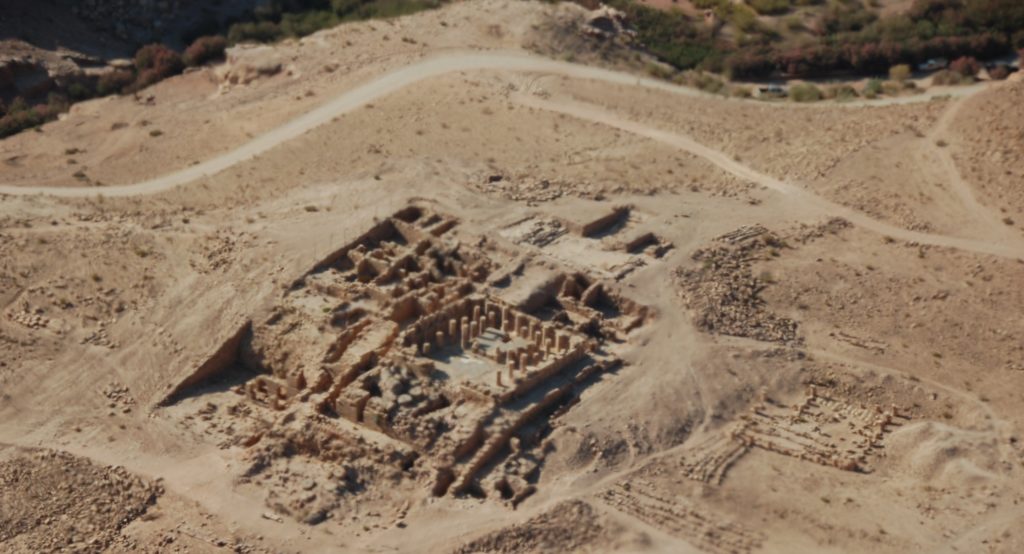This page is the beginning of a series on the Temple of the Winged Lions. For further reading, click through additional links at the bottom of this page.

At the heart of Petra, the ancient capital of the Nabataeans, lies a colonnaded street once surrounded by pools and gardens, a royal audience hall, and three major temples forming Petra’s sacred quarter. These include the Qasr al-Bint, dedicated to the chief Nabataean god Dushara, the Great Temple, which had changing functions over time, and the Temple of the Winged Lions, thought to have been dedicated to the goddess al-Uzza.
The Temple of the Winged Lions is a large sacred complex with a grand entrance flanked by columns and with an inner cultic chamber featuring a raised podium. While most of the temple columns had Corinthian-style capitals, those surrounding the main podium had unique “winged lion” capitals that give the monument its modern name.


The temple’s spiritual focus was likely a statue or a standing stone, set on the podium, around which priests and devotees would circle. The walls and columns of the temple’s inner sanctum were brightly decorated with floral and figurative designs, while recesses and niches surrounding the podium held offerings and idols. Thought to have been built by the Nabataeans in the early 1st century A.D., the temple continued to thrive after the Roman annexation of A.D. 106 and fell out of use following the earthquake of A.D. 363.
The temple was excavated between 1974 and 2005 by the American Expedition to Petra, an independent archaeological mission under the direction of Dr. Philip C. Hammond. These excavations have yielded much of what is currently known about the temple. The site subsequently became the focus of further documentation, conservation, excavation, and presentation efforts by ACOR from 2009 to the present as part of the Temple of the Winged Lions Cultural Resource Management (TWLCRM) Initiative. The Initiative was founded by former ACOR Associate Director Christopher Tuttle in collaboration with the Department of Antiquities of Jordan and the Petra Development and Tourism Region Authority (PDTRA). Efforts to preserve the site and make it accessible, completed in 2018, have been supported largely by the U.S. Ambassadors Fund for Cultural Preservation and ACOR’s USAID funded Sustainable Cultural Heritage Through Engagement of Local Communities Project (SCHEP). There are ongoing efforts by ACOR to prepare the final publication of the site, and ACOR continues to support conservation efforts and enhancements to the site with its partners and local communities.
Next up | 2. Excavations: The American Expedition to Petra, and beyond
See also:
3. The Temple of the Winged Lions Cultural Resource Management (TWLCRM) Initiative, 4. The Temple of Winged Lions Publication Project, 5. Support for the Temple of the Winged Lions, 6. Find out more about the Temple of the Winged Lions
